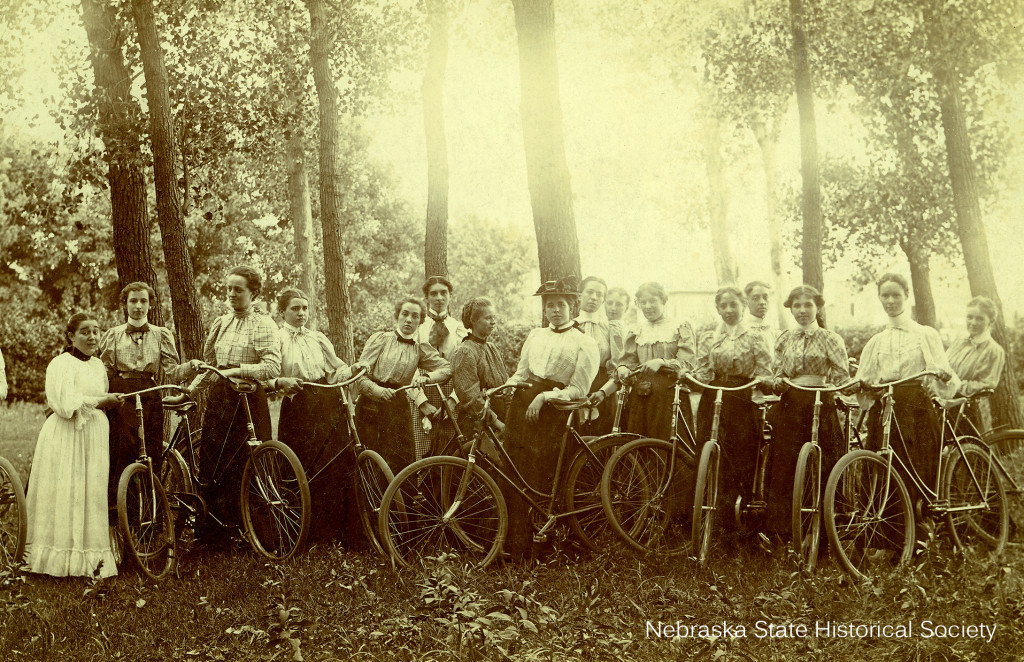Long exposure times, poor dental hygiene, and societal perceptions of smiling all contributed to the lack of smiles in early photographs. The first surviving photograph dates back to around 1826, and the cultural shift towards smiling in photos took over a century. Let’s explore the reasons behind this intriguing historical phenomenon.
Long Exposure Times: Holding a Smile for Minutes
Early photographic processes required subjects to remain motionless for extended periods, often several minutes. This was due to the slow chemical reactions necessary to capture an image. Any movement resulted in a blurry photograph. Holding a smile for that long was physically challenging, leading to serious or neutral expressions instead.  Two women on bicycles in old-fashioned clothing pose for a photo, looking serious. While technological advancements by 1845 reduced exposure times to under a minute, the tradition of somber expressions persisted for decades.
Two women on bicycles in old-fashioned clothing pose for a photo, looking serious. While technological advancements by 1845 reduced exposure times to under a minute, the tradition of somber expressions persisted for decades.
The Myth of Bad Teeth: More Than Just Pearly Whites
While poor dental hygiene was widespread before modern dentistry, it’s unlikely the sole reason for the absence of smiles. People could smile without revealing their teeth. A more plausible explanation lies in the prevailing social norms and cultural attitudes towards smiling in the 19th and early 20th centuries. The uniformly prim lips in old photos suggest a deliberate choice beyond mere dental concerns.
Smiling for Fools: Societal Perceptions of a Grin
Photographs, like painted portraits before them, were considered significant events, often a once-in-a-lifetime occurrence. This seriousness translated into the expressions captured in the images. Mark Twain famously stated that a photograph was a crucial document, and a foolish smile captured forever would be damning.  A black and white portrait of a woman in old-fashioned clothing, looking serious. This perspective reflects the belief that a smile was a fleeting response, not a default expression worthy of permanent preservation.
A black and white portrait of a woman in old-fashioned clothing, looking serious. This perspective reflects the belief that a smile was a fleeting response, not a default expression worthy of permanent preservation.
Art historian Nicholas Jeeves, in his 2013 article “The Serious and the Smirk: The Smile in Portraiture,” notes that smiling was often associated with negative connotations. Artists depicted smiling individuals as drunkards, fools, or children. This social stigma carried over into photography, influencing subjects to adopt more serious expressions. Even the enigmatic smile of the Mona Lisa, without showing teeth, has captivated and puzzled viewers for centuries.
The Rise of the Smile: Motion Pictures and Changing Attitudes
The advent of motion pictures in the 1920s exposed audiences to a wider range of human emotions. Films captured sadness, joy, anger, and silliness, normalizing the expression of various feelings beyond the stoic composure favored in early photography. This cultural shift gradually influenced photographic practices, and by the mid-20th century, smiling became a common and accepted part of capturing memories. The smile finally found its place in the photographic record, evolving from a rare occurrence to a ubiquitous symbol of happiness and shared moments.

